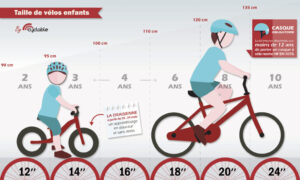In this article, we'll give you tips and tricks to improve your driving posture. Good posture at the wheel is essential to prevent muscular pain and back problems. Discover our tips for optimal posture and comfortable driving. Don't neglect your health, adopt the right reflexes right now!
He only has 4 hours to drive! (With Victor)
[arve url="https://www.youtube.com/embed/KqCHudLqHrY "/]
How can I improve my driving?
To improve your driving, here are a few tips:
1. Respect the rules of the road: make sure you know and respect the Highway Code. This guarantees your safety and that of other road users.
2. Avoid distractions at the wheel: don't be distracted by your cell phone, make-up or any other non-driving activity. Concentrate solely on the road.
3. Adapt your speed to driving conditions: take into account speed limits, weather, road conditions and surrounding traffic. Reduce speed if necessary to avoid accidents.
4. Keep a safe distance: maintain sufficient distance from the vehicle in front to be able to react in the event of sudden braking. This prevents rear-end collisions.
5. Use turn signals correctly: always signal your intention to change direction by using your turn signals. This allows other drivers to anticipate your movements.
6. Be aware of pedestrians and cyclists: give priority to pedestrians crossing the street and respect cyclists by giving them enough space. Courtesy towards other road users is paramount.
7. Avoid drinking or taking drugs while driving: never drive under the influence of substances that impair your ability to drive. It puts your life and the lives of others at risk.
8. Remain calm and courteous: don't give in to anger or aggression in the event of road incidents. Be aware of the behaviour of other drivers and keep your cool.
By following these tips, you'll improve your driving and contribute to a safer road environment for all.
How to maintain good posture in the car?
Good posture in the car is essential to prevent the aches and pains and health problems associated with driving for long periods. Here are a few tips for adopting optimal posture:
1. Adjust your seat: Make sure your seat is properly adjusted to provide adequate support. Adjust the seat height so that your hips are slightly higher than your knees. The backrest should be inclined at a comfortable angle, with appropriate lumbar support.
2. Position your feet correctly: Position your feet so that they can easily reach the pedals without having to over-stretch your legs. Keep your right foot on the accelerator pedal and the heel of your left foot resting on the ground or footrest.
3. Hold the steering wheel firmly: Keep your hands on the steering wheel at 9 o'clock and 3 o'clock or 10 o'clock and 2 o'clock for greater stability. Avoid holding the steering wheel with only one hand or leaning forward.
4. Keep a safe distance: Make sure you leave enough space between the seat and the steering wheel to allow your legs to move freely. This position prevents leg pain and improves blood circulation.
5. Avoid static positions: Try to move regularly while driving, changing your posture slightly every 30 minutes or so. This will relieve muscle tension and improve circulation.
6. Use support cushions: If you need extra support, use ergonomic cushions to maintain a comfortable, balanced position.
Don't forget to take regular breaks on long journeys to stretch your muscles and stretch your legs. Good posture in the car contributes to your comfort and safety on the road.
How to sit properly at the wheel?
How to sit properly at the wheel?
When you're driving, it's essential to be well seated at the wheel to ensure your safety and comfort. Here are a few tips to help you adopt the optimum position:
1. Adjust your seat: Start by adjusting the height of your seat so that your eyes are in line with the top of the windshield. Also make sure there's enough clearance between your head and the roof of the car.
2. Adjust backrest inclination : Tilt the seat back slightly to avoid sitting too upright or too reclined. Make sure your lower back is well supported.
3. Position your steering wheel : Adjust the height and tilt of the steering wheel so that your arms are slightly bent when you hold the wheel. This reduces muscle fatigue.
4. Place your hands correctly: Hold the steering wheel with both hands, positioned at 9:15 or 10:10. This gives you better control of the vehicle when you need it.
5. Keep a safe distance from the pedals: Make sure you have enough space to move your feet between the pedals without accidentally bumping into the car's other controls.
6. Adjust the mirrors: Adjust the inside and outside mirrors so that you can see them without moving your head too much.
7. Adopt a relaxed position: Keep your shoulders relaxed and avoid coming too close to the steering wheel. Try to maintain a natural posture, while being responsive and ready to react if necessary.
If you follow these tips, you'll be sitting comfortably behind the wheel, which will contribute to your safety on the road.
In conclusion, improving your driving posture is essential to prevent the aches and pains associated with poor driving posture. By following these tips, you'll be able to properly adjust your seat, position your hands, adjust your mirrors and maintain proper posture throughout your journeys. Don't forget to use HTML tags in key phrases of the text to emphasize important points. A good driving posture will not only contribute to your comfort, but also to your safety on the road. So take the time to adjust your posture before you start your engine, and enjoy a safer, more enjoyable ride.








